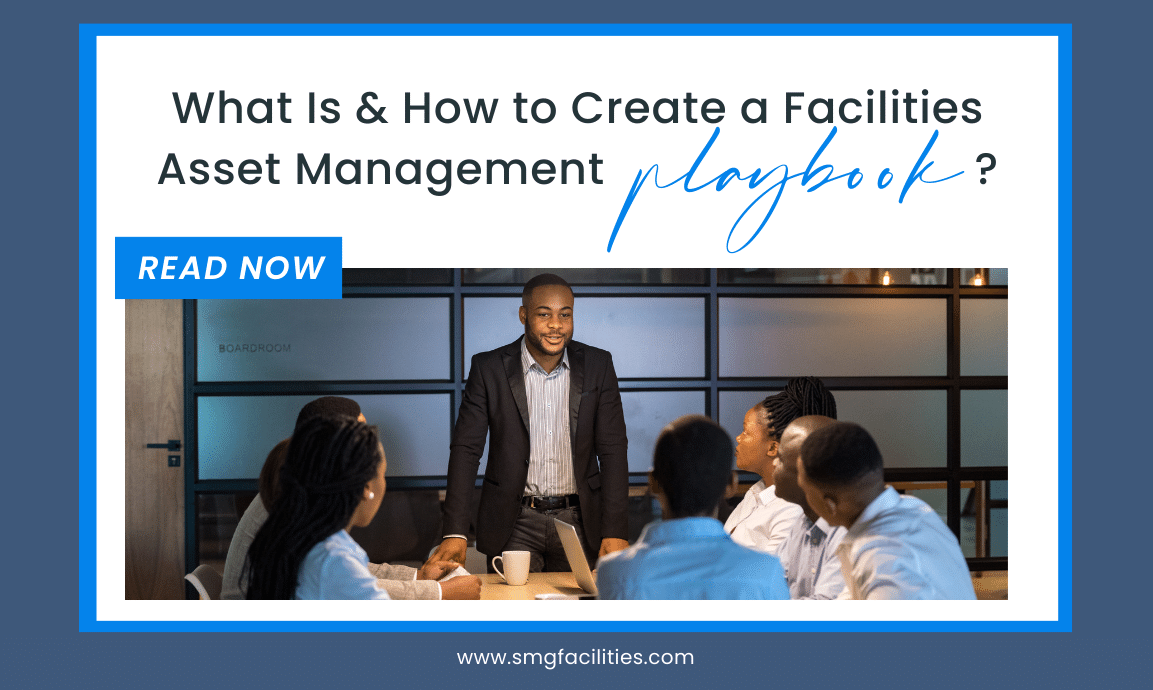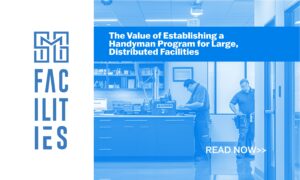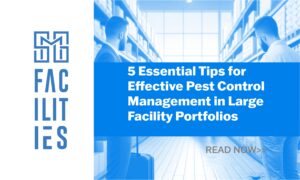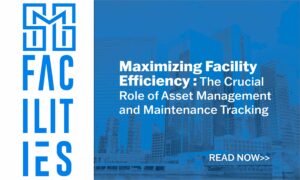Playbooks are a familiar concept to sports fans, coaches, and players who have spent hours pouring over the swirls and lines that explain a team’s strategies and plays. What makes this set of drawings, diagrams, and descriptions so important? When it comes down to it, while it’s possible to play a successful game without a playbook, the odds are stacked against a team that doesn’t have one.
This same principle applies to facility asset management. In this case, you may find a way to manage facility assets without a playbook effectively, but doing so will make the process more challenging and costly. Rather than describing formations and passes, a facilities asset management playbook outlines an organization’s strategies for all of the assets that it needs to function daily. By developing a playbook, you can improve the return on your investments and even extend the lifespan of vital assets.
What Is A Facility Asset Management Playbook?
When it comes to business operations, facilities managers shoulder a heavy burden, particularly because a lack of proper asset management can make it impossible for personnel to do their jobs. A facilities asset management playbook is a critical tool that can streamline and simplify your management and improve outcomes.
What Is the Purpose of a Facility Asset Management Playbook?
To get a better understanding of the purpose of a playbook, it’s helpful first to look at the objective of facility asset management as a whole. A facility manager has several key goals, including:
- Extending the life of each asset
- Minimizing the need for maintenance
- Lowering the cost of operations
- Complying with regulations
- Standardizing organizational practices related to assets
- Improving asset performance
- Reducing asset downtime
Even for the most experienced facility manager, this list of priorities can be a tall order. With a facilities management playbook, managers can create a clear, straightforward plan for how assets should be managed, including who is responsible for each aspect of management, when key steps such as testing and maintenance should be performed, and how important information should be communicated.
What Assets Fall Under the Responsibility of a Facilities Manager?
Asset management involves tracking all of an organization’s assets throughout their full lifecycles, from initial construction and installation to replacement. By doing so, the manager and all relevant staff can seek the best possible return on the investment for each asset by optimizing its operation, maintenance, and disposal. But what exactly is a facility asset?
By definition, facility assets have both practical and financial value. They are generally essential to the property’s ability to function, high value in terms of cost, and depreciating. Some assets, such as buildings and infrastructure, are passive, while others, like the land on which the facilities are built, are considered static. There are also active assets, which can be separated into three categories:
- Facility-related assets, including heating, ventilation, and air conditioning (HVAC) systems, lighting, and appliances
- IT-related assets like printers, copiers, software licenses, and data infrastructure like servers
- Personnel-related assets or, in simpler terms, items used by employees, such as vehicles, mobile devices, and uniforms
For each of these assets, a facility manager’s goal is to manage them in a way that is both proactive and cost-effective while also keeping in mind risk and performance. A facilities asset management playbook can be the key to achieving the most favorable outcomes for each of those parameters.
What Is an Asset Management Checklist?
To create an effective asset management playbook, the first step is to identify the assets of your facility. You can then begin to build your playbook by developing a checklist.
Why Is A Checklist Important?
Working with a checklist can extend the lifespan of your assets because it helps prevent items from being forgotten or overlooked. An effective facility asset management system can also be useful in terms of:
- Locating all of the assets in your facility
- Developing, tracking, and updating maintenance schedules
- Maintaining records of asset breakdowns
- Storing manuals for all equipment
- Monitoring financial depreciation of asset values
The completed checklist should include all of the important assets within your facility and the schedule for the tasks that are necessary to maintain them.
What Should a Facility Manager Include in an Asset Management Checklist?
A facility management checklist might include a number of different tasks. Managers tailor their lists to the needs of their organizations, but these are some of the items that typically appear on an asset management checklist for a commercial building.
Replacements
One of the key steps toward maintaining and protecting assets is replacing components before they can cause a system or equipment failure. Your checklist might include a schedule for replacing:
- Air filters in HVAC units
- Batteries in smoke alarms
- Water filters
- Light globes
You may also need to replace larger items, like windows and doors, on a less frequent basis.
Cleaning & Inspections
Another important part of managing assets proactively, rather than reactively, is conducting regular inspections of vital systems and cleaning them as necessary. This includes:
- HVAC ducts
- Windows and doors
- Plumbing
- Roofs
- Parking lots and garages
- Electrical systems
- Elevators
Keep in mind that these items do not all need to be assessed on a daily, weekly, or even monthly basis. The roof of a building, for example, may only need to be inspected quarterly.
Other Possible Items
Additional items on your checklist largely depend on the design and purpose of your facility. For instance, you might want to include:
- Servicing fire alarms
- Uploading data to a service provider
- Adapting assets for seasonal changes
- Checking fire equipment, including extinguishers
Your organization may also find it beneficial to list asset tasks related to issues like ADA compliance.
What Are the Benefits of a Facilities Asset Management Playbook?
Creating a facilities asset management playbook may seem like an unnecessary and tedious job for already overworked facilities managers. However, a playbook can reduce a manager’s workload over time by eliminating repetition, clarifying communication, and standardizing practices.
With a well-structured facilities asset management playbook, you can:
- Accomplish core objectives
- Prevent outages and failures by managing assets proactively
- Get the best possible return on your investments in facility assets
- Better coordinate and communicate across departments and with stakeholders
- Identify roles and responsibilities for FM asset management team members
To look at these benefits in more practical terms, consider the consequences of equipment failures, which can shut down operations for the long or short term. The cost of IT downtime alone is troubling, with the Uptime Institute reporting that over 60% of outages cost a minimum of $100,000 in total losses. While it’s unrealistic to avoid every potential outage or disaster, with a facilities asset management playbook, you can decrease the chances of a crisis by regularly maintaining the systems that are most vital to your organization’s ability to operate.
What Should You Look for in a Facilities Management Service Provider To Aid Your Facilities’ Asset Management?
Creating a facilities asset management playbook is an essential step in properly managing your organization’s assets, but finding the ideal service provider is equally vital. Partnering with the right facilities management service provider can help keep all of your assets up to date on documentation and that your asset management is optimized. When you look for a service provider, it’s important to find one that can demonstrate:
- Professionalism
- Responsiveness and strong communication skills
- Expertise in the relevant areas of facilities management
- The use of modern technology
- The ability to insure services to protect your financial investment
Working with a high-quality service provider can mean the difference between successful asset management and constant headaches and anxiety.
How Can a Playbook and Service Provider Work Together to Optimize Asset Management?
While asset and facility management is challenging, there are ways to simplify your strategies, avoid reactive management, and improve decision-making. With a facilities asset management playbook, you can increase efficiency and ensure that you have all the information needed to manage your organization’s assets. Partnering with an experienced third-party service provider can further improve your facility management strategies.For over 25 years, SMG Facilities has specialized in improving maintenance processes and helping multi-site clients develop effective management programs. To learn more about how to streamline your facilities management better, schedule a consultation today.

